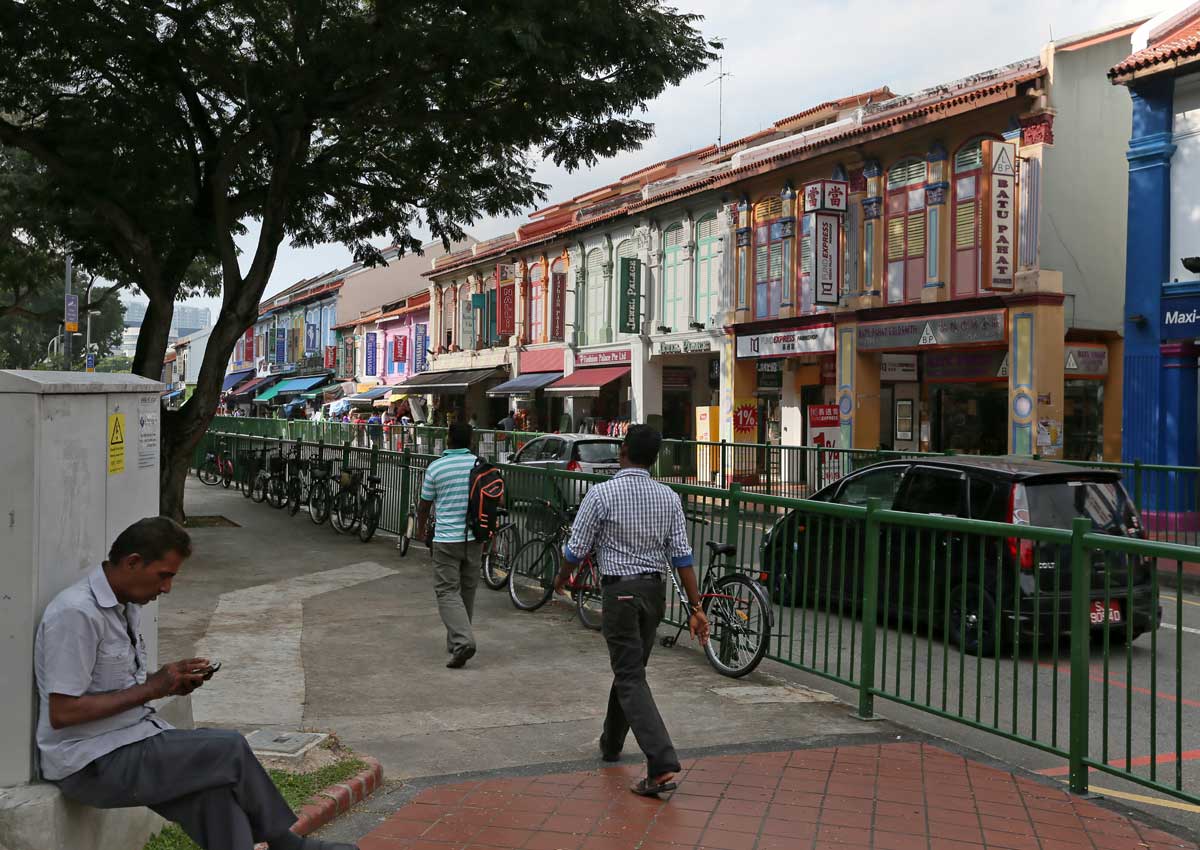Little India is noisy, crowded and not all that organised – which is exactly the way it should be, say locals, tourists and heritage experts alike.
They took issue with a recent Forum letter in The Straits Times, which compared Little India unfavourably with Chinatown and called on the authorities to give the historic cultural enclave a makeover.
The letter, written by Mr Roy Goh Hin Soon, had said: “Little India is not as organised as Chinatown. Most of the shops in the small lanes feature businesses that have no relevance to tourism at all, such as shops selling automobile spare parts, and food caterers.
“More can be done to spice up the area to attract more visitors, such as having food and beverage outlets with reasonable standards, and outdoor performances.”
But Dr Chua Ai Lin, president of the Singapore Heritage Society, said “organised” is not always the best approach and while Chinatown is geared towards tourists, it is authentic heritage that gives visitors a meaningful experience.
“Heritage derives its value from what is important to locals,” she said.
In fact, tourists increasingly want to explore places the way they are, said Ms Lena Loo, who organises heritage tours to Chinatown, Kampong Glam and Little India.
The shops – including food caterers and those selling car spare parts – are there because that is how people have always been trading, and the area not being specially made- up for touristsis exactly its appeal, she added.
“In general, (tourists) love Little India. They like the authentic feel of Little India. It’s not a manicured experience for them,” said Ms Loo.
A search on travel website TripAdvisor turned up mostly praise for the area. Most reviewers from countries such as Thailand and the United States highlighted Little India’s colourful sights, aromatic smells and cleanliness despite the crowds.
Some, however, said they prefer Chinatown as they found Little India confusing to navigate.
Chinatown underwent a massive overhaul in 1998, when the Government restored dilapidated shophouses and new types of businesses moved in. Street hawkers were later brought back to sell their specialities in Smith Street. The makeover received mixed feedback. While some lauded it for being modern, others said it lost its “soul”.
The other ethnic anclave, Kampong Glam, also underwent a makeover in 2012 to a lesser degree. It is now a popular hangout for hipsters.
By contrast, Little India, where Indians used to trade cattle, has been left mostly untouched and is patronised by locals for spices, vegetables, cuisine and clothes, and foreign workers for food and services like cash remittance.
One key complaint of Mr Goh’s was that visitors are forced to squeeze and walk along the five- foot way in Serangoon Road.
In response, shopkeepers said while the pathways are narrow, the cluttered pavements have a purpose.
At the Thandapani grocery store in Dunlop Street, the pavement was partially blocked by gunny sacks holding spices and ingredients like cumin, dried chilli and lentils. Another rack carried onions and ikan bilis.
Ms Saraswathy Ramasamy Thever, 52, who has been a cashier at the shop for 22 years, said these items attract tourists into the shop almost every day.
“They may not be thinking of coming into the shop, but when they see the spices or smell the incense sticks outside, they come in, they enquire, and they buy.”
Mr G. A. Abdul Kader, 58, a store manager at a grocery shop in Upper Dickson Road, said Little India has its shortcomings, but these do not seem to affect tourists.
“They love to take photos of women clad in saris, and they are curious about how Indians go about doing everyday things. If you’re making thosai or grinding spices, they will stand and watch,” said Mr Kader, who has been working there for 30 years.
However, he said he supports Mr Goh’s idea of having regular live cultural shows featuring Indian clothes, song and dance. Currently, these are held just during festivities.
He also said a food street in Campbell Lane will also attract more to the area without changing its identity.
The Singapore Tourism Board and the Little India Shopkeepers and Heritage Association did not reply to queries by press time.
Ms Stella Eswari, 33, a civil servant who works in Little India, said she sees a healthy number of tourists in the area. As a Singaporean, it is also her go-to place for everything Indian.
“The way the shops are right now captures the essence of Little India. It’s not gimmicky. You get what you see,” she said.
jalmsab@sph.com.sg

This article was first published on Dec 19, 2016.
Get a copy of The Straits Times or go to straitstimes.com for more stories.






